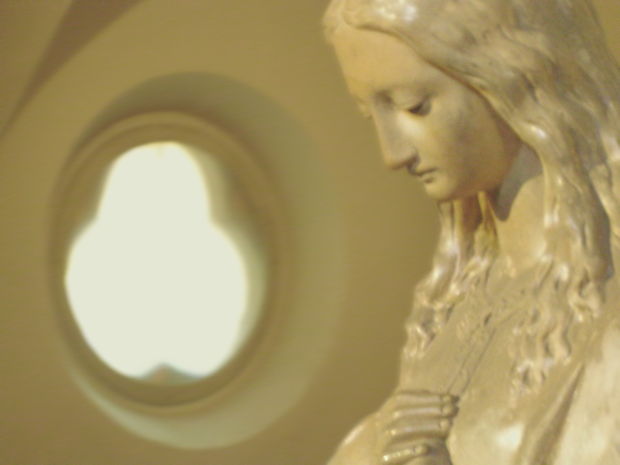Summer wanes, and the start of the academic year is around the corner at my university. As a child, I wished the summer months away, eager to return to school. Buying notebooks and new tennis shoes marked that my exile from the classroom was soon at an end. As an adult, however, I savor each day left. It’s not that I don’t still love education. I have chosen to work at a university because I thrive in a culture and community of learning; this summer going back to graduate school for the start of a second master’s degree was sheer joy. Yet, in ways that I never did as a child, I have grown to appreciate the quieter, less hurried days of summer. I breathe deeply, read more, run more, play more, spend more time in the company of friends and family. In the fall it is a shock to look at my calendar and realize that all the wonderful empty white spaces seem to have disappeared. The temporary panic that ensues pressures me to think about what I ought to say “no” to, a skill I need to cultivate.

However, this fall I also find myself wondering where the Spirit is inviting me to say “yes.” My guide is Mary — whose words to the angel Gabriel, “Behold, I am the servant of the Lord; may it be to me according to your word” — are the penultimate “yes” of the Christian tradition, surpassed only by Jesus’ “yes” in the Garden of Gethsemane — “not my will, but thine, be done.” Over the summer, while studying at Creighton University, a new friend led me to a painting that expresses the beauty of Mary’s transformation through her surrender to the Spirit. He found the painting in Nash Chapel, a side chapel of St. Cecilia Cathedral in Omaha, and when he described it to me over dinner one evening, I knew I had to find it. The painting depicts Pentecost, the disciples and Mary gathered for the Spirit’s arrival in a mighty rushing wind and tongues of fire. Mary, at the center, is perfectly at rest. She welcomes the Spirit with a gentle turn of her hand upward, open to receive once again God’s presence within her. The disciples look far less comfortable with the whole experience, some of them cowering in the corners. Through Mary, the artist seems to say, as my friend shared when he told me about the painting, “Look, it’s this easy to receive God. I’ve experienced this before. You don’t need to be afraid.”
How I long for such a complete “yes” to God. I wonder what it would look like to be, as was Mary, a womb for what God desires to birth in the world. I have been reading Marcus Borg’s Jesus: A New Vision recently. While I have fundamental disagreements with how he interprets Jesus, I have been deeply enriched by the way he breaks open my understanding of Jesus’ compassion. Speaking of God’s graciousness, Borg writes, “The word Jesus used most often to identify this quality of God was ‘compassionate.’ It has particularly rich resonances in Hebrew and Aramaic, where it is the plural of the noun ‘womb.’ Thus ‘compassionate’ bore the connotations of ‘wombishness’: nourishing, giving life, embracing; perhaps it also suggested feelings of tenderness. God is nourishing, life-giving, ‘wombish’”(p. 102). How might my “yes” to the Spirit and yours allow God to bear in us the life-giving, nurturing compassion of Jesus in the world, the life of love shared by the Trinity? Lord, help us all be attentive to where you are calling forth our “yes.” May it be to us according to your word.